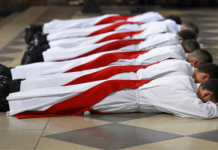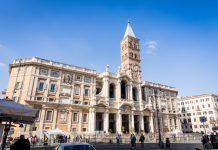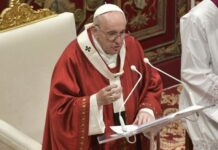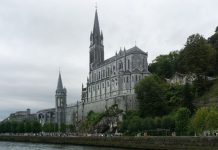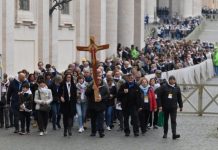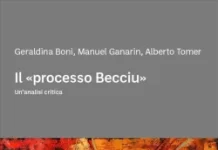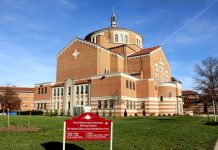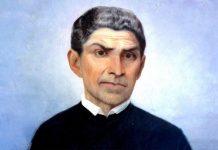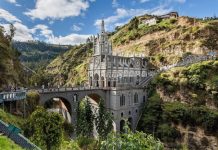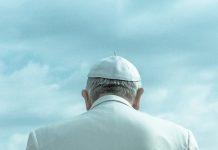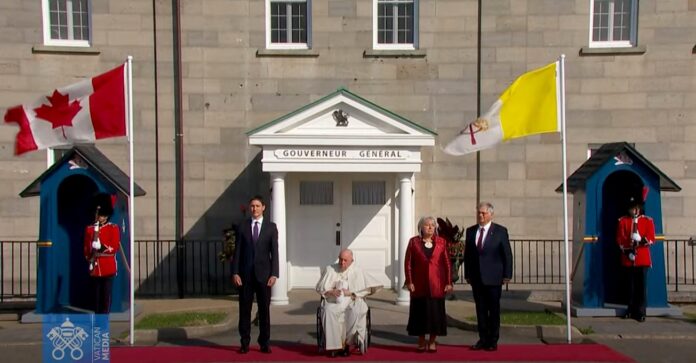On July 27, 2022, Pope Francis met with Prime Minister Trudeau and Governor General Mary Simon at The Citadelle de Quebec, where an undersized diplomatic snafu unfolded.
Newsroom (27/07/2022 9:10 PM Gaudium Press) According to diplomatic protocol, only Mary Simon was supposed to address the Pope in her capacity as the representative head of state. Mary Simon, an Inuk who is the first Indigenous person to hold the largely ceremonial position of the governor-general, did address Pope Francis.
But the Vatican said Trudeau’s office requested the prime minister be allowed to offer some introductory remarks. This request arrived in the days before Pope Francis left Rome but after the Pope’s itinerary had been finalized and printed.
A senior Canadian government official said Trudeau typically delivers remarks during visits by foreign leaders and that it was important for him to address Canadians during Francis’s visit “particularly given the importance of the matter.” It was, however, added in at the last minute.
After Pope Francis apology at Maskwacis Park (“Bear hills,” in the Cree language), Crown-Indigenous Relations Minister Marc Miller said the “gaps” in Francis’s apology could not be ignored. Miller noted that Francis didn’t mention sexual abuse in his list of abuses endured by Indigenous children in the schools. Francis on Monday listed instead physical, verbal, psychological and spiritual abuse. In addition, Miller noted that Francis on Monday spoke of “evil” committed by individual Christians “but not the Catholic Church as an institution.”
The stage was thus set up by Crown-Indigenous Relations Minister for Prime Justin Trudeau to shame Pope Francis and the Catholic Church.
Trudeau, a Catholic whose father, Pierre Trudeau, was prime minister while the last residential schools were in operation, insisted that the Catholic Church as an institution bore blame and needed to do more to atone.
Speaking before Francis, he noted that Canada’s Truth and Reconciliation Commission in 2015 had called for a papal apology to be delivered on Canadian soil but that Francis’s visit “would not have been possible without the courage and perseverance” of survivors of First Nations, Inuit and Metis. They travelled to the Vatican last spring to press their case for an apology.
“Apologies for the role that the Roman Catholic Church, as an institution, played in the mistreatment on the spiritual, cultural, emotional, physical and sexual abuse that Indigenous children suffered in residential schools run by the church,” Trudeau said.
The encounter of the Catholic Church with Indigenous peoples predates Confederation and residential schools by two centuries. During his visit to Quebec City, the Holy Father will pray at the tomb of St. François de Laval, the first bishop of Canada who fought mightily with the French colonial authorities to defend the dignity and well-being of the Indigenous peoples, particularly regarding the alcohol trade.
Let the reader never forget that in the late 19th century, the Canadian government instituted a policy of residential boarding schools for Indigenous children. The education would impart basic literacy and numeracy but also have a cultural dimension. Part of a project of assimilation most infamously expressed as “killing the Indian in the child.” Indigenous children were often forbidden to speak their Native languages or wear traditional dress. At first, attendance was voluntary, but in the early 20th century, it became compulsory, which meant the forced separation of children from their families. Most schools closed in the 1960s, though a few remained into the 1980s.
While the schools were instituted and funded by the Canadian government, the operation of the schools was entrusted to the churches. Catholics operated about two-thirds of the schools; Protestants ran the remaining third. The majority of the Catholic schools were run by the Missionary Oblates of Mary Immaculate (OMI).
The Canadian government has apologized for its role in the school’s legacy. Former Prime Minister Stephen Harper issued a formal apology over the residential schools in Parliament in 2008, calling them a sad chapter in Canadian history and saying the policy of forced assimilation caused great harm.
Meanwhile, The Churchill-Hudson Bay Diocese was the first Diocese in Canada to apologize to the former students of a residential school back in 1996. Followed by apologies from Pope Benedict XVI in 2009 at the Vatican and a later apology by Pope Francis also at the Vatican, where he met with Indigenous leaders from Canada.
As part of a lawsuit settlement involving the government, churches and the approximately 90,000 surviving students, Canada paid reparations that amounted to billions of dollars being transferred to Indigenous communities. The Catholic Church, for its part, has paid over $50 million and has committed to $30 million more over the next five years.
Trudeau implied that much more needed to be done by the church and that while Francis’ visit had “an enormous impact” on survivors, it was but a first step.
Politicians — the prime minister and some Indigenous leaders — will indeed attempt to score political points in the week and months ahead after the Pope returns to Rome. But for the Pope — and for the people he is coming such a long distance to meet — it is the prayer, the penitence and the pilgrimage which remain primary.
Raju Hasmukh



